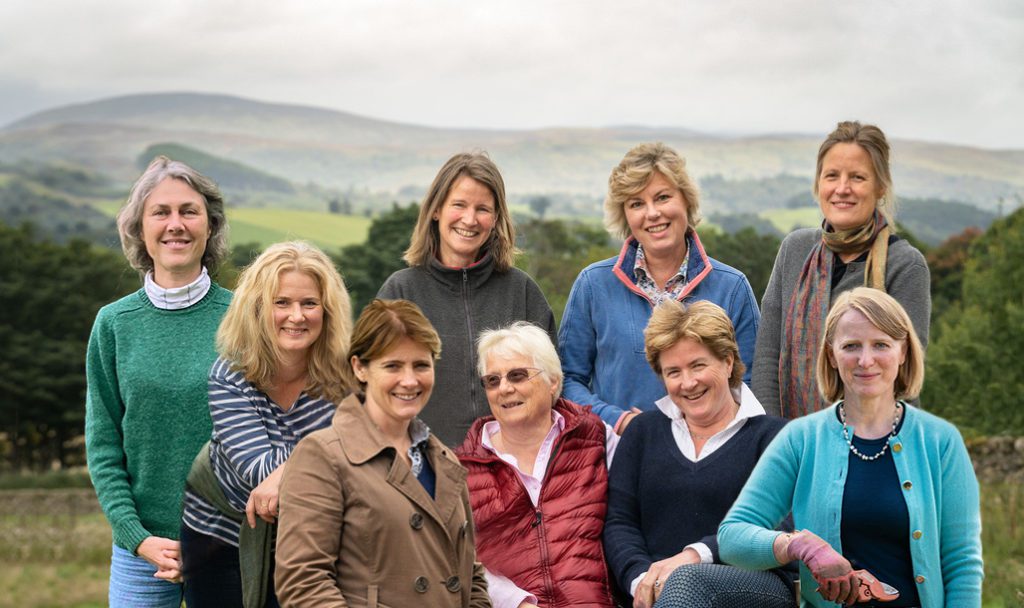Jane Spencer-Nairn is one of nine tea obsessed ladies, who as part of a collaborative effort, are producing authentic hand-crafted black tea grown in Scotland.
They believe the Scottish weather and terroir imbue something special into their tea, and they are not alone as their Nine Ladies Dancing Tea is sold at the rare tea counter of Fornum & Mason's in London for £200 per 100g.
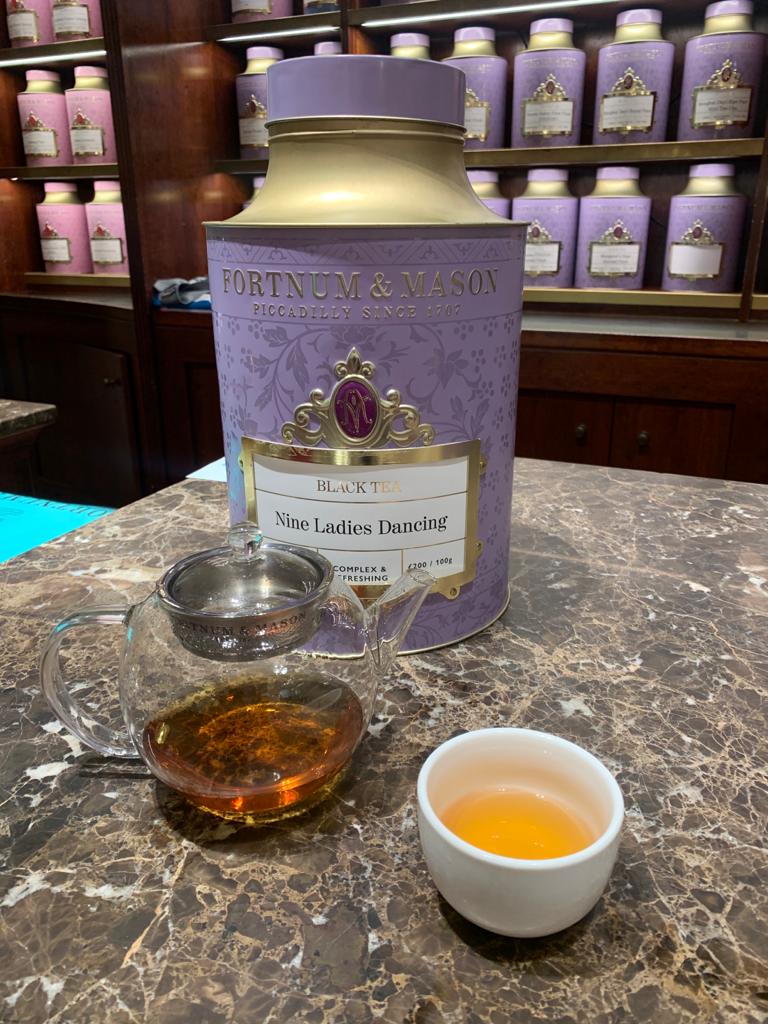
It is also served in the Royal Penthouse Suite at The Corinthia Hotel in London, which takes tea very seriously.
The tea enterprise was formed when, one of the nine, Susie Walker-Munro learned that tea was being grown in Cornwall.
She was intrigued and thought she could give it a go up in Scotland at her home Kinnettles in Angus.
After trialing tea growing herself for a number of years, she then put the word out amongst friends to see who else would be keen to diversify and the Tea Gardens of Scotland group was formed in 2016.
As a result, the nine banded together with the common aim of becoming tea planters, transforming their gardens, or farmland into micro tea plantations.
I talked to one of the ladies, Jane Spencer-Nairn, who relocated north when she married her husband Jamie.
They moved to family farm in Fife when her father-in-law retired five years ago, and four years ago she planted around 2000 tea bushes in part of their walled garden.

Jane's favourite brew is Earl Grey with either a dash of milk or lemon, but she is also keen on Lapsang, Darjeeling, Green Tea and Matcha, "if I'm needing an energy boost."

The tea garden is Jane's domain and she adds with a hearty chuckle, "There is not a lot of gracious sitting around with china cups and saucers and instructing other people.
"I grab a cuppa before I put the dogs out, feed the cats, check on the chickens and then just get everything else started."
Although not fully organic, she asks nature to do its best, "I'm not terribly keen on chucking lots of chemicals.
"You can improve the health of the soil with compost and mulching to make the plants as healthy as possible."
Tea plants need acidic soil and lots of water and everything needs to be carefully controlled, "it is a crop with not an awful lot of processing before it gets ingested."
However tea gardening in Scotland is not all plain sailing.
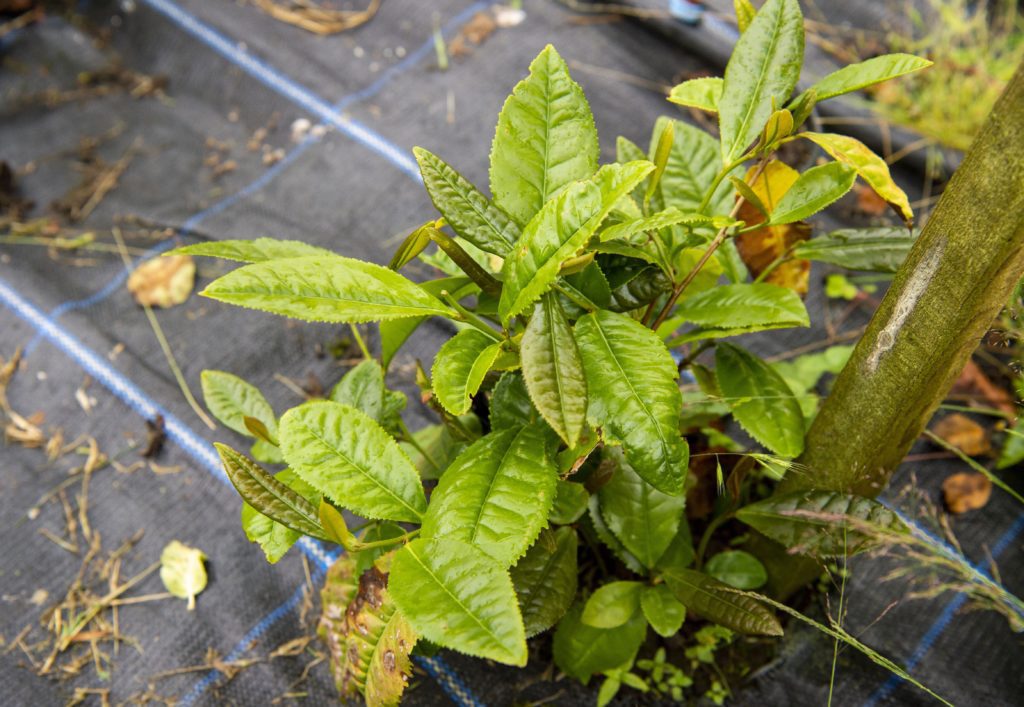
The ladies approach has evolved, as the climate here means they are working at the edge of what is possible.
They were advised at the beginning to plant in uniform rows, and she said, "what we are finding is what works in Sri Lanka and India maybe isn't as great in the cooler climes of Scotland and that has been really interesting."
She admits, "The tea has grown even more slowly than even we thought it might do."
To make matter worse, in the first year the saplings were hit by the Beast from the East, "I think we are the coldest tea growers in the world, other people have are at similar latitudes but have warmer climates.
"Our plants get badly knocked in the winter. So we may end up just doing it very differently, but it is fun finding out what works," she said.
One of the unique selling points of the Nine Ladies tea is that their saplings are grown from seed.
Normally tea is grown from cuttings because growers are looking for uniformity in the genetics.
When you grow tea from seed it initially puts down a really long tap root and then feeder roots grow from off that, while with cutting plants the roots radiate out just below the soil.
Cutting plants will only last about 45 years whereas a seedling plant could last over a hundred years.
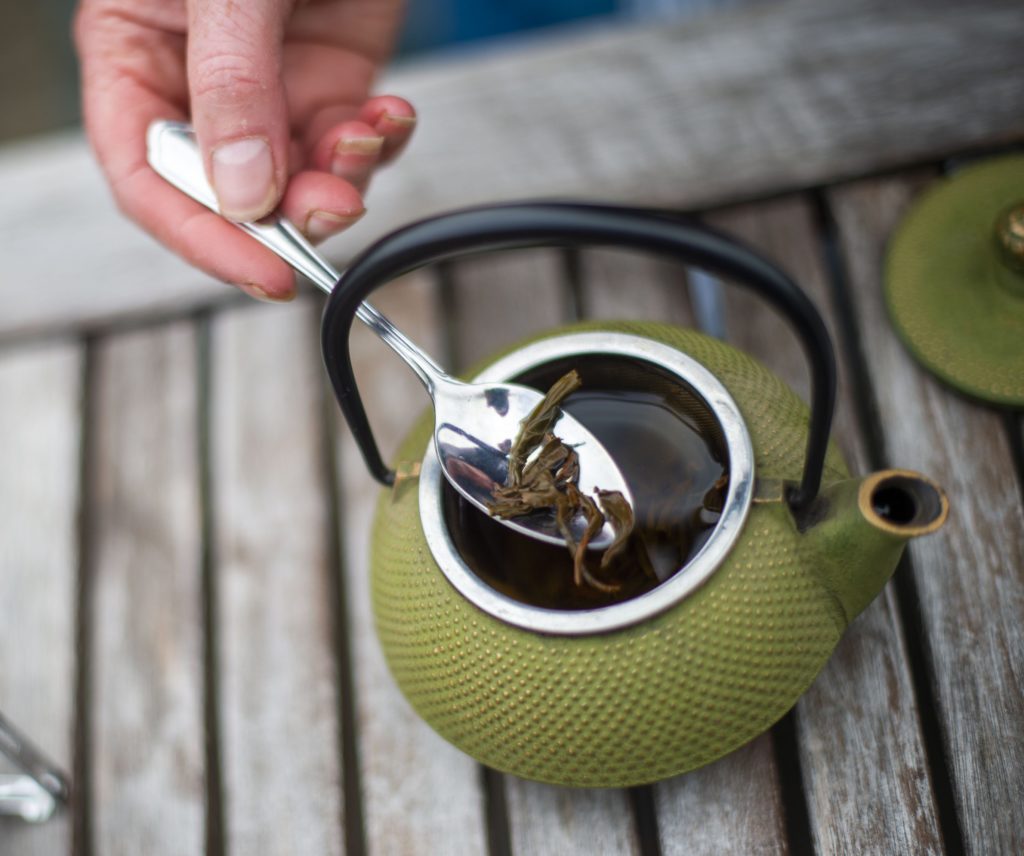
Susie Walker Munro was the driving force in germinating tea seeds from both Nepal and from ex soviet, Georgia.
The nine took advice from various growers and grew seeds in tall plastic sleeves, 20 cm tall about 10 cm in diameter, around forty thousand of them were hand-stuffed with a sand and ericaceous soil mixture.
They were all delighted when the vast majority of the seeds germinated, but Jane said, "the tricky bits comes when you plant those seedlings into the ground.
"What was amazing was, once they had germinated, sliding open the glasshouse doors and walking in, and the smell of tea growing was just extraordinary, I wish you could bottle it."
In the last four years, the plants have endured two bad snowy winters, despite their best efforts of protecting the plants with netting and fleece, as a result some are now 90 cm high while others did not make it.
Tea, when left to its own devices, will grow into a tree. The plants that survived that first winter then needed to start being pruned into a wine glass shape - the standard tea bush shape - which is best for producing lots of shoots.
Jane explained: "so we are taking an experimental approach.
"You can quite easily kill a bush by pruning it at the wrong time or too hard and they are not used to the winters we are getting here so we have to be much more gentle with them."
Last year Jane harvested a kilo of fresh leaf, "clearly we are not getting as much as other people do in hotter countries."
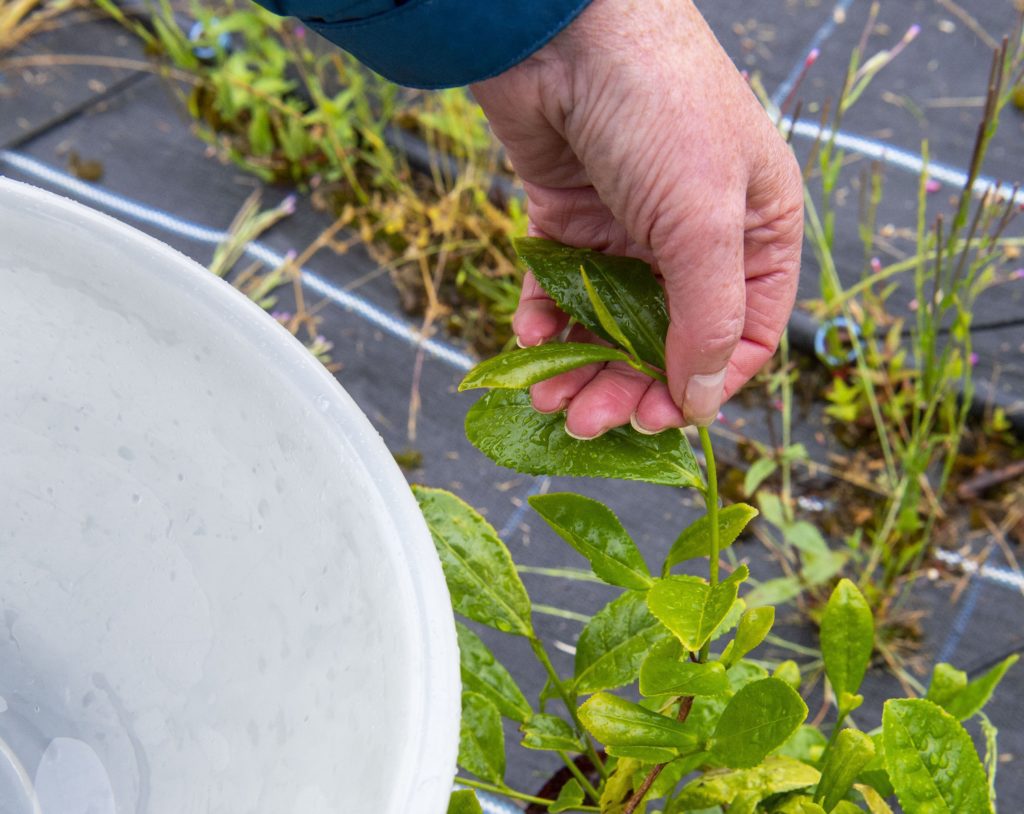
"When we harvest you pluck a bud and two leaves, you don't want the buds to be too tight or too open or the leaves too mature because it affects how they will behave during processing."
She explained harvesting, "is a twist and snap movement rather than snip which will bruise it, we are not allowed to do it with our fingernails because we are aiming for really very high end tea, so we are treating it as absolutely the best we can."
Currently the nine ladies are combining all their separate tea harvests into a 'mellange'.
Last Monday was the group’s first co-ordinated tea pluck of 2021. The carefully packaged tea leaves from each individual garden were rushed to Beverly Wainwright for processing at The Scottish Tea Factory.
They are very careful about hygiene, "you don't want to be making your nice cup of tea and find a hair in it so we tie our hair back and we don't wear fluffy fleeces in case a fibre gets in the tea."

Processing of the harvested leaves is done by master tea maker and Tea Consultant, Beverly Wainwright, who works across the globe assisting small scale tea producers, and she also runs various tea courses at Comrie croft.
Jane explained that making great tea, "is as much down to the maker, who brings out the best possible flavour.
"If you really know about teas you can tell instantly in the same way that if you are a wine buff, whether it is South African Pinot or Australian Shiraz."
The ladies tea is analysed and checked before sitting on racks to wither overnight, with the humidity and and temperature closely monitored.
The leaves are rolled to break the cell membranes, and to release polyphenols before the leaves are then oxidised.
It is then left to let the flavours develop before being dried in a special oven to between 3-5% humidity, and then packaged.

Last years tea is currently available at Fortnum & Mason and the ladies were delighted to gain recognition for their Scottish tea.
Some of the ladies are hoping to build their micro businesses future with some tea tourism.
Before lockdown Jane organised tours for Japanese and Chinese guests to visit her tea garden and she plans to do more next year, covid permitting.

The ladies have also been on a tea fact finding mission to Sri Lanka where they visited both large tea processing factories as well as the smaller more exclusive plantations where the pickers snip the tea with gold scissors and wear white uniforms.
For just now she is happy with her current tea garden, "There is quite a bit of work that needs to go into it while the plants are still small, and there is quite a bit of arduous weeding."
The nine plan regular meetings to visit each others gardens to share their experiences and compare notes and make business choices.
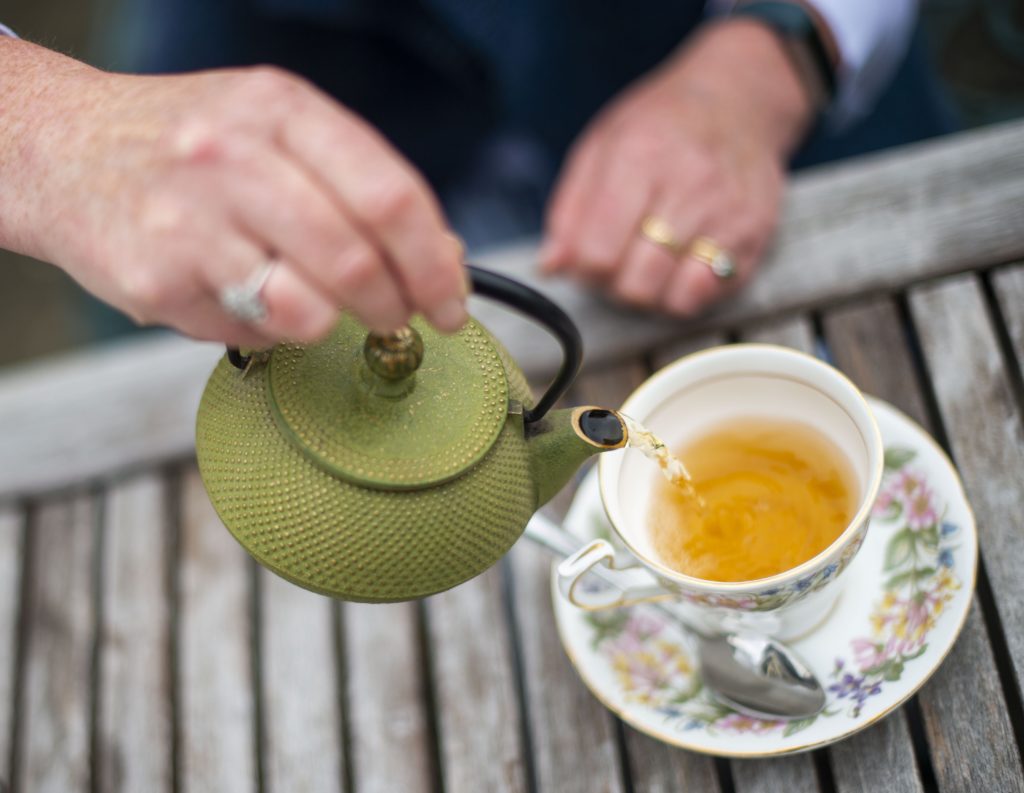
Making decisions between the nine is not hard she said, "we are all women and we just all work together, we don't always agree but then we talk it through and there is a consensus.
"That is actually one of the nicest things about it.
"We are all working for the same thing and trying to deal with the weather.
"Established tea growers in India and Sri Lanka are surprised that our plants are only growing for about four months of the year while they are plucking every two weeks all year round, but what we are trying to do here is something a bit special."
Nine Ladies Dancing Tea is creating quite a stir in the tea world.
